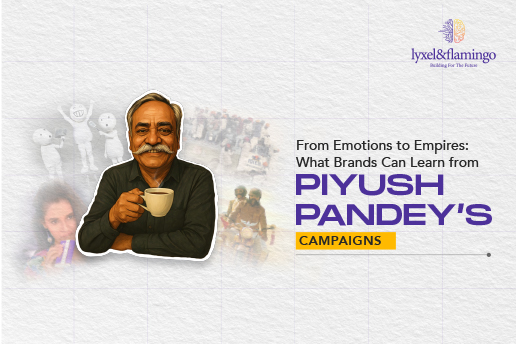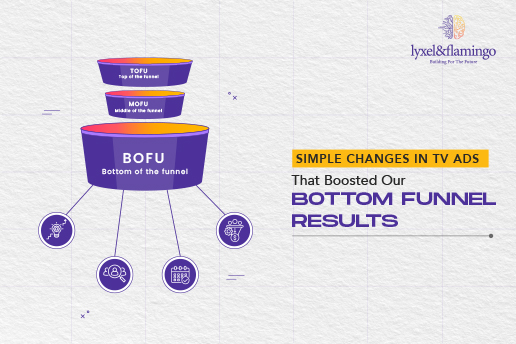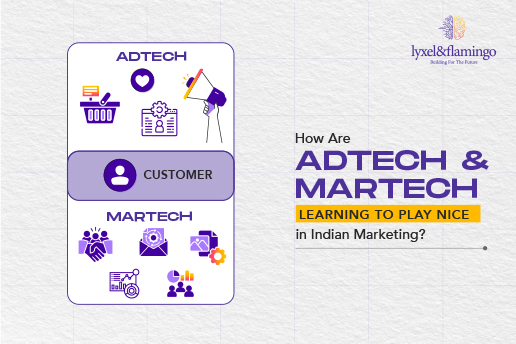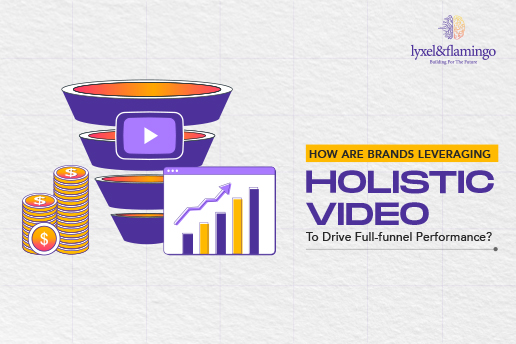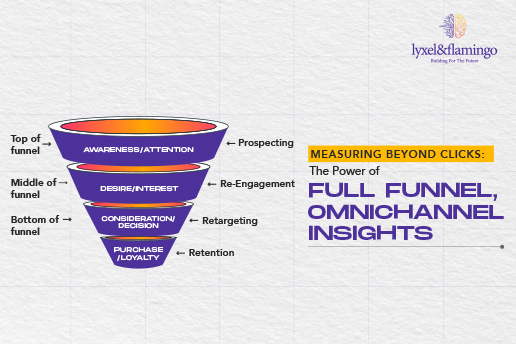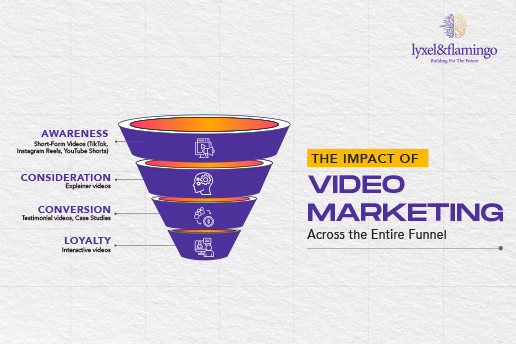Whether it’s business owners or marketers, they are always interested in learning new marketing strategies. Did you hear about the new buzzword, “Full-funnel marketing ?” If you did, you are probably wondering what it is or how it really works.
If you have no clue where to begin – don’t worry. We have got your back.
In this article, we will discuss everything you need to know about full-funnel advertising and learn about its fundamentals. Let’s dig in!
Full-Funnel Marketing
Full-funnel is a form of marketing that allows marketers to engage and appeal the prospects at every stage of the customer journey. Instead of only focusing on conversions, the full-funnel marketing strategy builds customized campaigns that boost brand awareness and create solid relationships with prospective customers.
Generally, marketers use the funnel system to break the buying process into different stages.
It starts with the lead stage, where a prospective customer shows interest in a product for the very first time. And it continues all the way to the final stage, where the prospect finally becomes a paying customer.
However, full-funnel marketing never separates the customer’s buying journey into multiple stages. Rather, all these different stages of a buyer’s journey are considered to be part of the same process.
Full-funnel advertising uses the latest technologies to influence every facet of the purchasing process and nurture prospects at every stage of the funnel.
Building a Full-Funnel Marketing Strategy
Every marketing funnel categorizes multiple touchpoints in a buyer’s journey. It can be mainly categorized into three different stages – awareness, consideration, and conversion. Every single of these stages is essential. Still, many marketers fail to address all of these stages properly.
According to a report, even though nearly 69% of all marketers produced content for the brand awareness stage, only 20% of them actually built content for the last stage – conversion.
You need a clear understanding of the stage your prospects are currently at if you want to customize your marketing objectives for each of those prospects properly. Let’s see the three most important stages of the full-funnel marketing strategy.
Top-of-Funnel (TOFU): Interest + Awareness
Top-of-funnel or TOFU represents the prospects who are currently in the awareness stage. This is the widest part of any marketing funnel that holds a large audience with diverse search intent.
The prospects gathered in this stage usually don’t have any urgent need for the solution a business provides. So, the main objective of this stage is to reach as many people as possible and provide them with engaging content to make them aware of a product or solution.
You can use the TOFU campaigns to represent a brand to a broader audience and show the brand value using beneficial resources. The goal is to create great customer experiences.
On top of that, TOFU campaigns also assist marketers in enhancing brand awareness to make prospective customers notice a brand, build trust, and make them interested in the brand’s products or solutions in the next stages of the funnel.
Here’s a list of strategies marketing professionals often use to influence the TOFU audience:
- Content marketing initiatives like blog posts, e-Books, infographics, or educational emails to educate and entertain the audience.
- Social media marketing initiatives like paid advertisements and social media posts inform the audience of a business’s products and build interest in them.
- Campaigns like display ads, influencer marketing, and public relations campaigns to drive brand awareness.
Middle-of-Funnel (MOFU): Intent + Consideration
The Middle-of-funnel or MOFU in a full-funnel marketing strategy represents the prospects who are currently in the consideration stage. These prospects have flown in from TOFU and most likely have defined their problems and looking for specific solutions.
At this stage, the prospects will start comparing different brands, their products and services, and the business you are promoting has also become an option or possible solution.
The MOFU stage represents a significantly small number of potential customers (who are more inclined to buy the product you are promoting) compared to the TOFU stage. Prospects who have already entered this stage are now looking for particular products or solutions.
As a result, you need to build marketing campaigns to educate the prospects as much as possible, so they select the products you are promoting while making their purchase decisions.
MOFU campaigns should be geared toward establishing your brand expertise and showing what makes your solutions better than other competitors. During this stage of the buyer’s journey, the campaign should give prospects enough confidence to advance to the next step.
Here’s a list of strategies marketing organizations often use to influence the MOFU audience:
- Long-tail keyword strategies like paid search ads (Google Ads), SEO-optimized product or service pages, and knowledge libraries to capture traffic.
- Retargeting initiatives like service-oriented emails and retargeting ads to remain at the top of the mind of the prospects.
- Educational content like how-to guides, white books, webinars, and video demonstrations to educate potential customers.
Bottom-of-Funnel (BOFU): Evaluation + Purchase
The Bottom-of-funnel or BOFU of a full-funnel advertising strategy represents the highly-motivated prospects who are currently in the conversion stage. The leads of this stage have engaged with your MOFU stage marketing materials and are ready to make purchases.
All they need right now is something extra to make the final purchase decision, which can be extra confidence, urgency, or probably additional benefits.
Prospects in the BOFU stage usually evaluate the product or service-specific queries and review multiple testimonials. They are trying to make sure that their purchases will yield maximum benefits or that the purchase would be worth their money.
So, in this stage of funnel marketing strategy, you must show why the product or service you are promoting is better than similar brands.
Here’s a list of strategies marketers often use to influence the BOFU audience:
- Initiatives like case studies, comparison charts, and testimonials to highlight the value of the brand you are promoting.
- Strategies like demonstrations, video walk-throughs, and consultations to customize buying experience.
- Incentives like promotions, saving calculators, and additional features to make the prospects seal the deal immediately.
KPI Alignment and Measurement
If you want to make your full-funnel marketing strategy successful, you need to determine what your goals are. Furthermore, it is important to have a method for evaluating your success rate based on a variety of aspects.
The key performance indicators or KPIs you use at each stage of the funnel will help you measure whether your marketing objectives have been achieved. This way, you will be able to quantify your success. For example, 8% increase in CTR for the MOFU campaigns.
However, some elements, like brand awareness in the TOFU stage, can be quite difficult to track. You can use these methods to quantify brand awareness effectively:
- You can use Google Search Console to compare the number of ad clicks against the number of ad impressions.
- Track different brand mentions using Google Trends to figure out how many prospects are talking about the brand you are promoting.
- Use social media analytics to figure out what kind of posts are getting the most impressions or what is the ideal time to post new content on social media.
- Create polls, focus groups, or run surveys to measure the level of brand awareness.

Continuous Optimization and Nurturing
Full-funnel advertisingis more than just publishing different educational or informational materials and building new ad campaigns in the funnel stages. You have to analyze how the audience is behaving in each funnel stage and take appropriate actions to guide the leads deeper into the funnels.
There are multiple ways to do it. For starters:
- You can add call-to-actions or CTAs in each of your informative blog or marketing materials in the TOFU stage.
- In the MOFU stage, you can run retargeting ad campaigns on social media platforms to target the prospects who have interacted with your brand in the TOFU stage.
- You can add various promotional offers and discounts in the BOFU marketing campaigns to create a sense of urgency that will lead to the final conversion.
You can also do a thoughtful ROI analysis, like measuring the bounce rate, CTR, or final conversion rate. With this information, you can take the right steps to optimize your marketing funnel to get better results.
Wrapping Up
These days, more and more people are switching to digital channels to get more updates about their favorite shows, find new content, or learn about new products and services. This makes it easier for businesses and marketers to evaluate the performance of their advertisements and brand-building campaigns.
Hence, it is even more important to combine different marketing funnels so that prospective customers can flow seamlessly through them.
If you plan to create marketing campaigns, keep the full-funnel marketing strategies in mind to create content that promotes brand awareness, and consideration, and finally leads to conversion in a coherent manner.
With solid funnel advertising and marketing methods, you will not only create a frictionless path to purchase but also motivate the pre-existing customers to come back to you again and again.
Need assistance? Bring the full power of your marketing to the streets today with our proficients!
